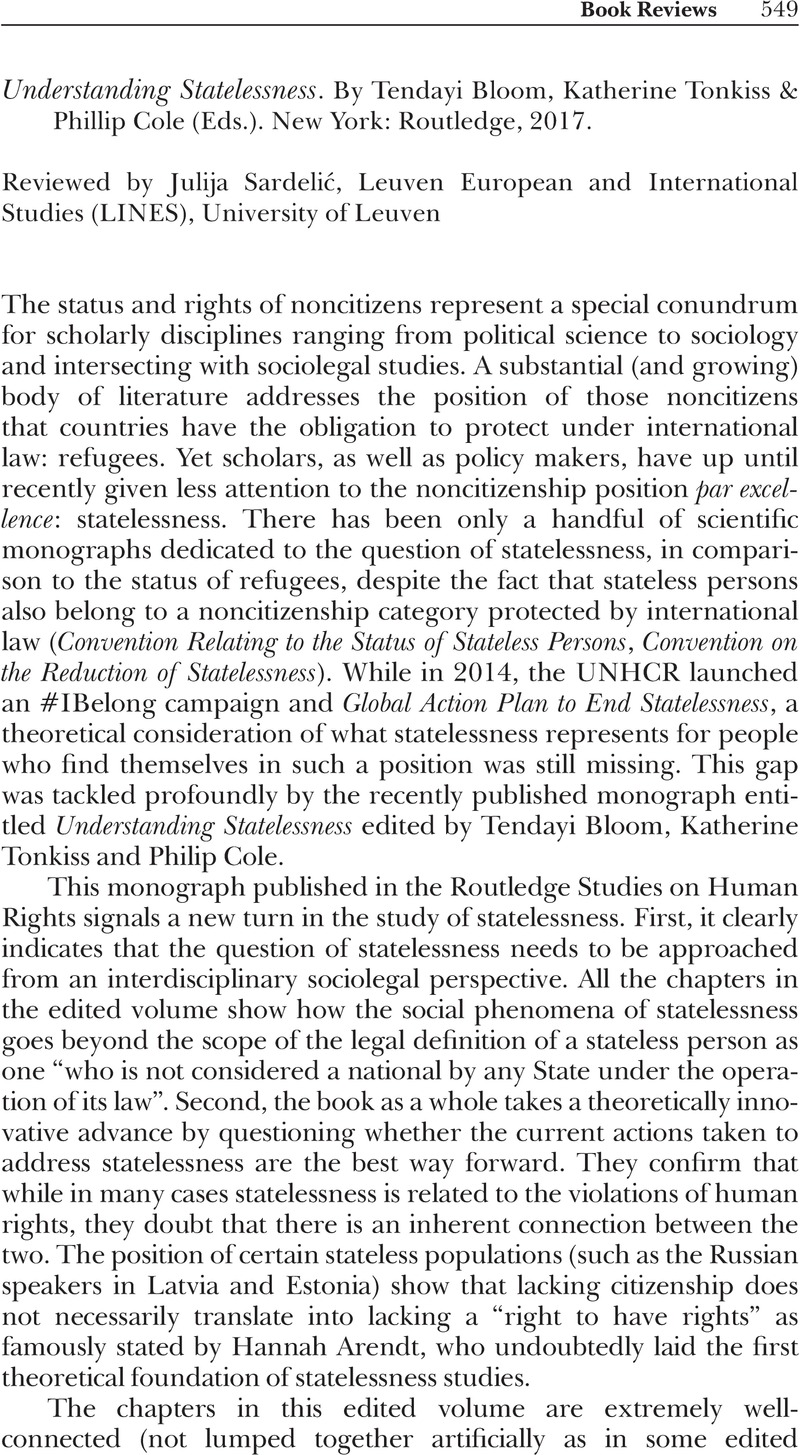Crossref Citations
This article has been cited by the following publications. This list is generated based on data provided by Crossref.
Lloydd, Marnie
2023.
Legal identity under insurgencies and unrecognised states: interdisciplinary approaches pushing us back, better-equipped, to international law?.
Citizenship Studies,
Vol. 27,
Issue. 7,
p.
954.



